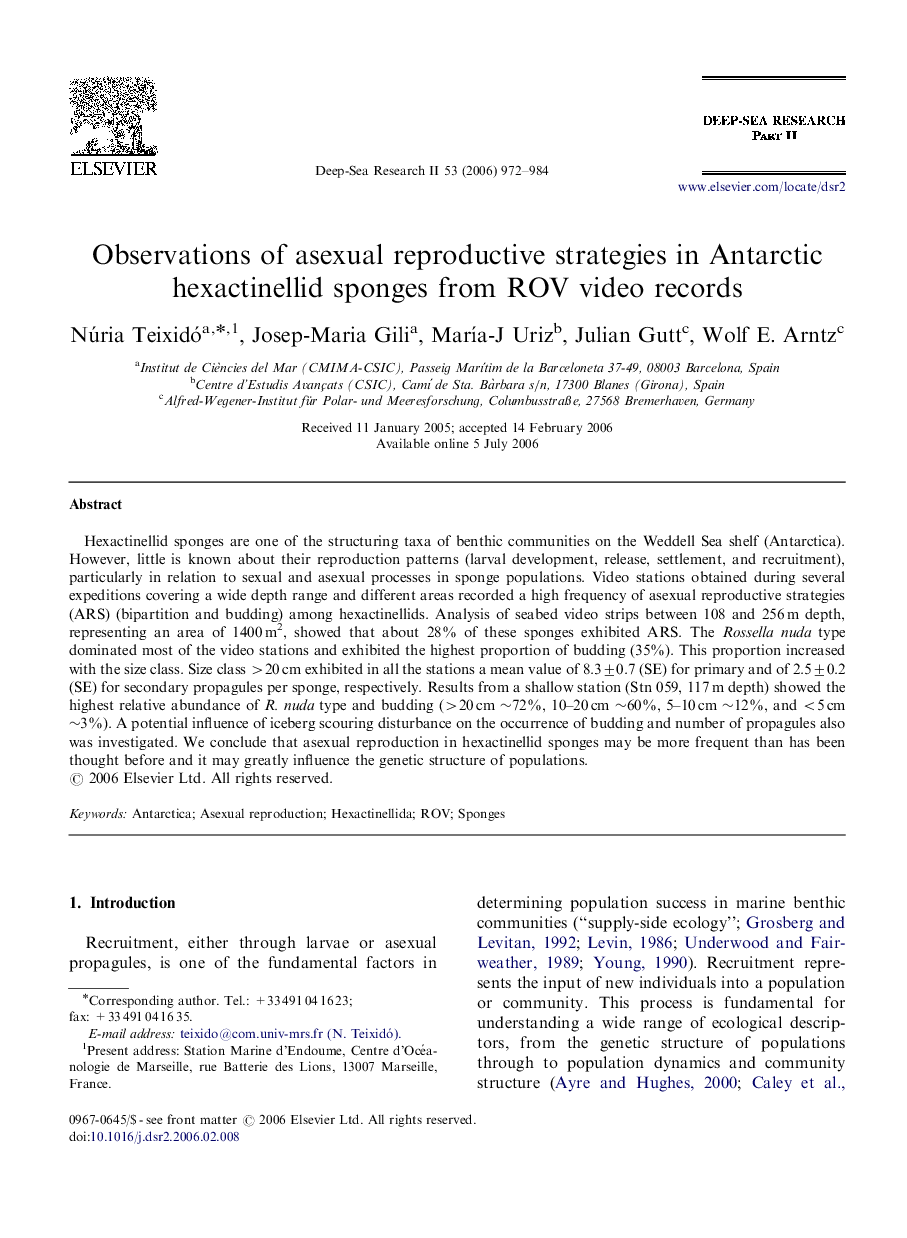| Article ID | Journal | Published Year | Pages | File Type |
|---|---|---|---|---|
| 4538508 | Deep Sea Research Part II: Topical Studies in Oceanography | 2006 | 13 Pages |
Hexactinellid sponges are one of the structuring taxa of benthic communities on the Weddell Sea shelf (Antarctica). However, little is known about their reproduction patterns (larval development, release, settlement, and recruitment), particularly in relation to sexual and asexual processes in sponge populations. Video stations obtained during several expeditions covering a wide depth range and different areas recorded a high frequency of asexual reproductive strategies (ARS) (bipartition and budding) among hexactinellids. Analysis of seabed video strips between 108 and 256 m depth, representing an area of 1400 m2, showed that about 28% of these sponges exhibited ARS. The Rossella nuda type dominated most of the video stations and exhibited the highest proportion of budding (35%). This proportion increased with the size class. Size class >20 cm exhibited in all the stations a mean value of 8.3±0.7 (SE) for primary and of 2.5±0.2 (SE) for secondary propagules per sponge, respectively. Results from a shallow station (Stn 059, 117 m depth) showed the highest relative abundance of R. nuda type and budding (>20 cm ∼72%, 10–20 cm ∼60%, 5–10 cm ∼12%, and <5 cm ∼3%). A potential influence of iceberg scouring disturbance on the occurrence of budding and number of propagules also was investigated. We conclude that asexual reproduction in hexactinellid sponges may be more frequent than has been thought before and it may greatly influence the genetic structure of populations.
